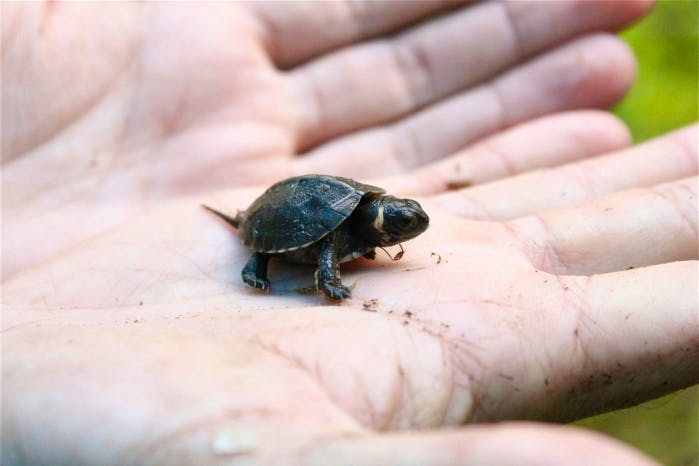“Coast to Coast” is a summer blog series highlighting some of America’s most imperiled wildlife. Using the U.S. Fish and Wildlife Service’s new state-by-state endangered species map, Defenders is drawing attention to native plants and animals most in need of help.
In honor of the Fourth of July holiday last week, the first species comes from the first states. Found in all but two of the 13 original colonies, the bog turtle once ranged far and wide in America.
Despite its large territory, however, this tiny turtle is facing some titanic threats. Reaching lengths of only 4.5 inches, the bog turtle is not only the smallest turtle in North America but has also become one of the rarest.
Bog turtles rely on fragile marshes and wetlands for everything from food – like seeds, berries and invertebrates — to finding mates. They’re perfectly adapted to life in the swamp, where they elude predators by burrowing into the muddy soil and disappearing from sight.
But when these wet places disappear, so do the turtles. In recent decades, their population has declined dramatically. A large percentage of the bog turtle’s former habitat has been drained and converted to farmland, making it virtually impossible for this wetland wonder to survive. Invasive plants, such as the Purple Loosestrife from Asia and Africa, are crowding in. Their roots grow too thickly for any nutrients to pass through. And poachers often nab this diminutive dude as a favorite of the pet trade.
These threats have resulted in a perfect storm for the bog turtle, which was finally listed as threatened under the Endangered Species Act in 1997. Progress toward recovery has been slow to date, but a promising program was put in place in 2008 as part of the Farm Bill. The bog turtle was selected as one of seven unique species under the Working Lands for Wildlife program in need of additional help from private land owners.
The voluntary program offers incentives to farmers and other private landowners to help conserve the species. By altering or restricting livestock grazing and controlling weeds, farmers and ranchers can improve and restore habitat for bog turtles. As an added bonus, efforts to protect wetland areas for bog turtles will also benefit wild turkeys, bass and trout.
To find out more about this terrific turtle listen to this podcast featured on the Fish and Wildlife Service’s website.
Audio clip: Adobe Flash Player (version 9 or above) is required to play this audio clip. Download the latest version here. You also need to have JavaScript enabled in your browser.



